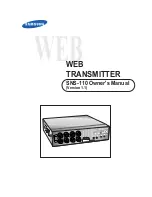
PC5 SERIES WATT TRANSDUCER CALIBRATION MANUAL
Page 12
10. INSTALLATION
The PC5 may be installed in any position
and in an environment of not more than
+60
°
C or less than -10
°
C.
For best accuracy the current carrying cable
should be centered in the window of the
transducer.
Caution must be observed when installing
the current transformers. See section 3.3A.
11. TROUBLESHOOTING
The majority of the problems can usually be
traced to improper connections. The
following list gives some common problems
and solutions.
PROBLEM: No Output
SOLUTION:
1
115 VAC Instrument power not
connected. This applies only
to Options B, X5, D, or E.
2
Voltage not connected.
3
Defective readout.
4
On 30/ 3W or 10/3W units,
could have reverse polarity
either on voltage or current
circuit.
PROBLEM: ½ Output
SOLUTION: All
50-ampere
Watt
Transducers require two turns
through the window of the
current transformers.
PROBLEM: 1/3 Output
SOLUTION: 30/ 4W units, polarity of one
phase reversed.
PROBLEM: Doesn't Seem Calibrated
SOLUTION:
1
Calibration point is at the
"Rated Output" not Effective
Watts or Full-Scale range.
2
"CAL" adjustment has been
changed.
3
Customer relies on voltage and
current
for
power
measurement. This method is
only accurate in a resistive
load.
4
Most industrial loads are either
inductive or capacitive. This
causes a phase shift in the
current relative to the voltage.
For instance with a phase shift
of 30
°
, the true power would
be 86.6% of E X I. This is
derived by P = E X I X
COS(30°) The cosine of 30
°
is
0.866, so one can see that
86.6% of E X I is the maximum
power obtainable.
Note
that
an
unloaded
induction motor will run at very
low power factor. What this
means is that very little power
(compared to the rated motor
power) is required to keep the
motor running at constant











































